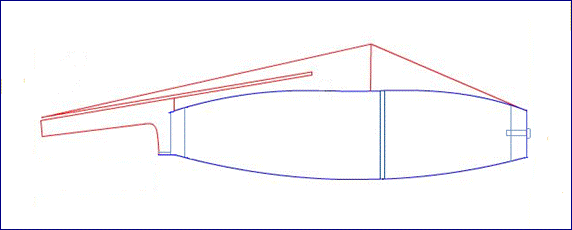
|
Violin Arching and thicknesses |
|
Early in his career, Stradivari made arches approximately 20 mm high. These violins are called “amatizzati”, i.e., “of the Amati period.” Beginning in 1690, he gradually reduced their height to between 18 mm and 17 mm. From 1700 onwards, they stabilized between 16 and 14 mm. During the same period, arches on Guarneri del Gesù’s violins were generally 13 to 15 mm high, and Steiner’s 18 mm to 20 mm.
After 1700, Stradivari created the perfect model with ideal proportions. The following twenty years saw the climax of his art and reputation. He produced the most beautiful violins ever made.
Low arching is undeniably the best option to make a good violin. To do so, the materials must have sufficient performances, so that no deformation occurs during tuning of the starting volume to the correct frequency.
In L’anatomie et la physiologie du Violon, de l’Alto et du Violoncelle. Aperçus nouveaux, suivis du vernis de Crémone, étude historique et critique (Paris, 1924), Lucien Greilsamer emphasized the difference between arching on old Italian violins and modern ones. He held it to be one of the main causes of poor sonority in modern stringed instruments, all the more so in that treatises on the subject generally taught that the top and back plates were alike. Quite rightly, he was astonished that modern violin makers paid so little attention to their arching.
Arch height A = 18 mm – Arch height B = 14 mm.
The length of curve A is greater than that of curve B.
Thicknesses depend neither on the arching height, nor on the starting volume, but on the density
The shape and volume of the arching are essential keys for tuning violin top and back plates in a limited, reproducible spectrum, by optimizing the weight of the materials. Long forgotten or ignored, these factors were no longer considered fundamental to violin tone. Since simple inspection of an antique violin does not allow the examiner to draw authoritative conclusions as to the determining role of the arching, research was oriented towards other considerations.
All old Italian violin back and top plates are unique in their conception (arch shape and height). Each material used in modern violin construction will likewise be unique due the wood’s properties. It is therefore impossible to replicate the shape of the arch of an Italian violin using templates, to impart the same plate thicknesses, and to obtain the same frequency on the free materials.
The difference in arching between top plates and back plates is due to the structure of the materials.
Spruce has greater longitudinal celerity than maple, whereas both materials have the same transverse celerity. This is why it is necessary to remove more wood at the ends of the archon a back plate to raise the frequency of the extrados, whereas on a top plate, more wood must generally be left at the ends of the arch in order to avoid lowering the mode 5 frequency of the extrados below the minimum threshold.
It is necessary to use a reproducible protocol when working the materials in order to tune free top and back plates of different species and characteristics to the same frequency. The arch height on a top or back plate is relative: it depends on the longitudinal celerity and the distribution of the volume of wood on the extrados.
Three types of arching shapes
Amati
Stradivarius
Guarnerius
Thicknesses Distribution
There have been numerous publications on the thicknesses of top and back plates on Stradivari and Guarneri violins. Their dimensions are often given as models to follow. But the fact is data on thicknesses and their distribution are only relevant to the individual instrument on which the measurements were taken. Thicknesses will be as varied as the number of violins.
Thicknesses do not modify the fundamental acoustics of the violin. The free materials’ frequencies and the relationship between the “coupling frequencies” of the top and back plates are what differentiate a good violin from a bad one.
Top and back plates deformation
Photo 306. After stringing up, the top plate sinks somewhat beneath the bridge’s feet, with a slight transverse elongation toward the C-bout on the side of the bass bar. Several days –sometimes even more, depending on its resistance at the center– are required for the top plate to reach static equilibrium.
Photo 305. Concomitant deformation by the top plate toward the interior of the sounding box, as well by the back plate toward the exterior, will appear under permanent pressure from the strings.
The top plate sinks at the center, elongating transversely in the direction of both C-bouts.
In this configuration, the materials will reach their critical limit for static and durable deformation after several weeks, or sometimes several months, depending on their resistance.
Photo 306. The local top plate deformation below the bridge feet (the bridge functions as a central pivot) is independent of the static and durable deformation of the top plate (photo 305)
Each vertical impulse from the bow on the strings temporarily modifies the static deformations
The pressure of bridge being vertical, the top plate does not elongate longitudinally, because the corners cannot distance themselves from each other in this direction.
Other non-static deformations of the back and top plate exist, depending on the principal mode frequencies (A0, C2, B1-, B1+).
Photo 305. Cross section at the center
305
Deformation on the arching of a weak back plate can be as great as 2 mm toward the exterior, with the B1+ mode frequency rising by 20 Hz (sometimes more).
Photo 306. In static equilibrium (under constant pressure from the strings), the top plate is always slightly hollowed beneath the bridge feet.
306
Copyright © 2010 - 2019 Patrick Kreit. Reproduction of any content of this site without my express written permission is prohibited.
|


|
What is arching in violin making? |





